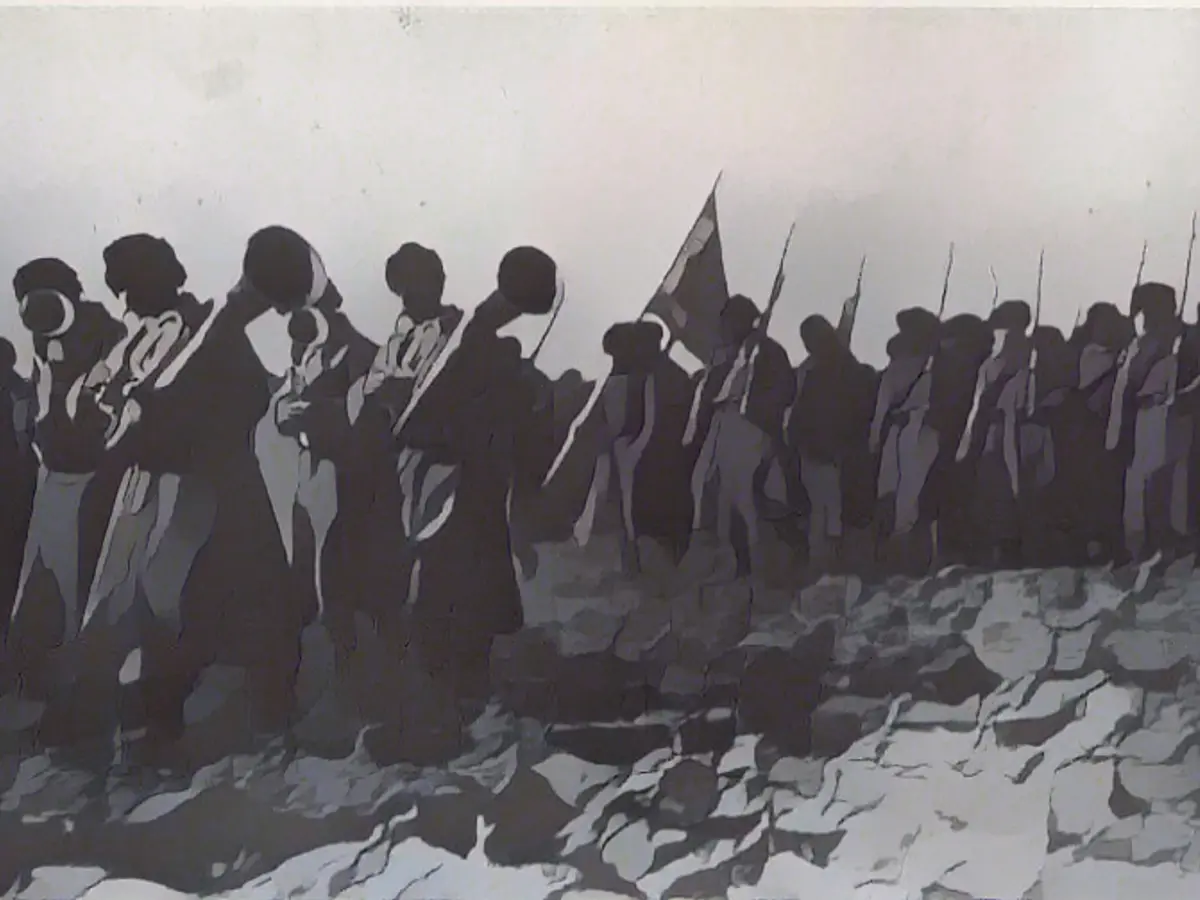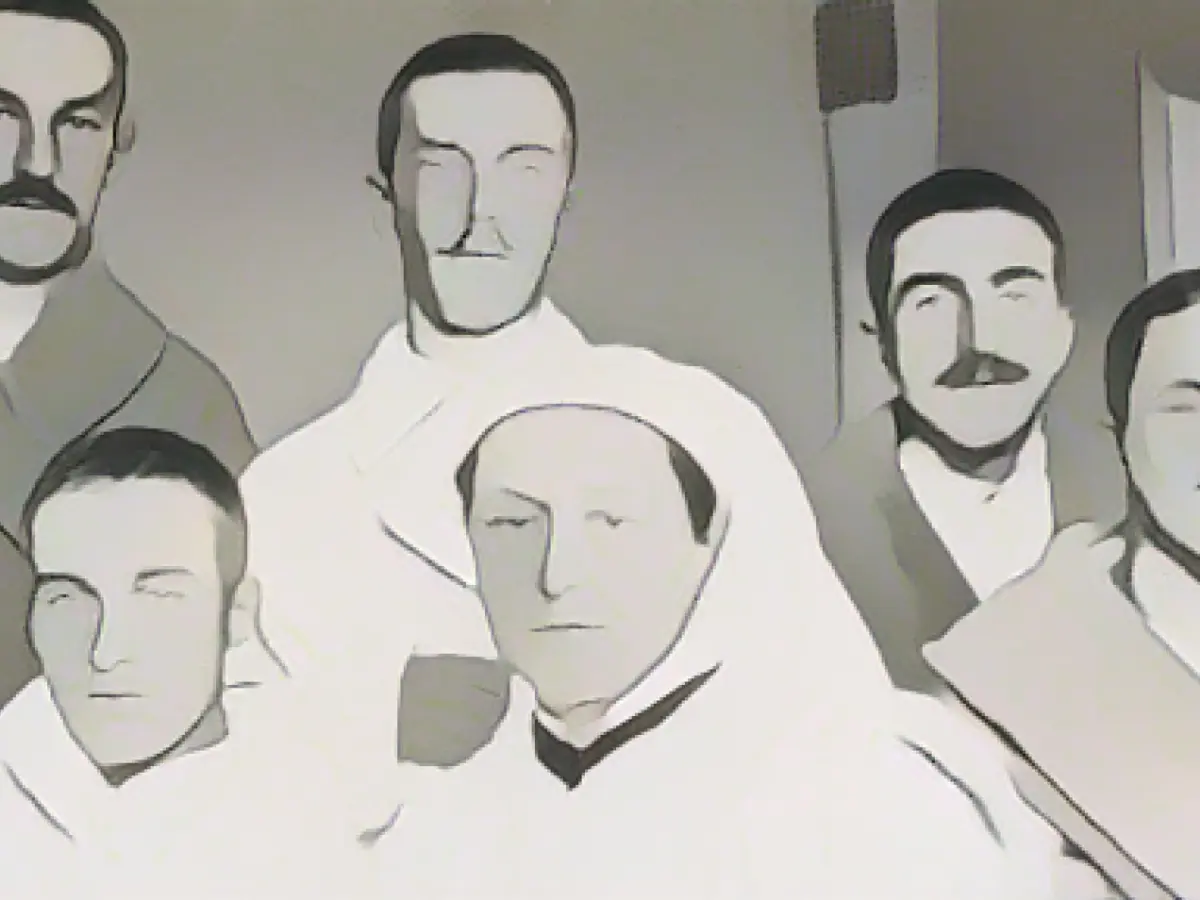Forgotten women - Vera Gedroits - this princess saved countless soldiers on the operating table
On February 22, 1905, the battle for Mukden was lost for the Tsar's army. After the fall of Port Arthur, the Imperial Japanese Army attacked the Russian positions with several offensive lines. Today, no one in the West remembers this battle in which 600,000 soldiers fought.
Vera Gedroits, a doctor, was operating outside the city. She was responsible for the sick and wounded in a large field hospital that had formed around her hospital platoon. The princess decided not to abandon the sick. In the middle of the night, to the rumble of cannon fire, she evacuated the darkened platoon. The troops in the area were prepared to put up resistance until the wounded had been evacuated, even if they themselves were cut off.
Awards for bravery
As the locomotive rumbled through the night, Gedroits and her team operated ceaselessly to rescue the most seriously wounded. Always in fear that the enemy might discover the train and take it under fire. For her bravery, she was awarded the clasp of the Order of St. Anne and the ribbon of St. George - the highest decorations of the Tsarist Empire.

Vera Gedroits had fled to Switzerland as a young woman to escape the Tsarist secret police. She studied medicine in Lausanne, as Switzerland was one of the few countries that accepted female medical students at the time. Back in Russia, she built a modern hospital for the Maltsov cement factory in the Chizdrinsky district. Rather by accident of the factory's working procedures, she operated on many of the workers in the abdominal and groin area. A skill that came in handy later.
With the hospital train to the front
In 1904, the Russo-Japanese War broke out, the disastrous course of which sealed the fate of the tsarist dynasty, even if contemporaries could not have known it.
The energetic Gedroits organized a mobile hospital - housed in a train, paid for by the nobles. The staff consisted of volunteers. At the front, Gedroits broke with the methods of military medicine. Russia, which was otherwise so backward, had almost 80 hospital trains in service, which was extraordinarily modern. Gedroits organized the platoon and hospital, which was housed in the houses of a village, according to the methods of a modern hospital. Above all, this meant that she ensured cleanliness and hygiene.
In addition, Vera Gedroits broke with the previous practice of all military doctors not to perform operations on gunshot or stab wounds to the abdomen. In previous wars, it had been avoided to open the abdominal wall. Anyone with internal injuries either had to be lucky or die. There was also a reason for this reluctance: the standard of doctors was generally not high enough for such operations, and it was usually not possible to create a sterile environment in the field. An operation would almost certainly have led to infection, so the wounded were left to fend for themselves.
Bold, energetic style
Gedroits now realized that many people with internal injuries could be saved if only they were prepared to operate quickly. And she saw that even an injury to the bowel did not have to be fatal. Dr. Gedroits' aggressive surgical management violated regulations and ran counter to the nonoperative climate that prevailed in the second half of the 19th century, Ben J. Wilson wrote in 2007.
She recognized how crucial the time factor was. And she decided to operate as close to the front line as possible - in the case of abdominal wounds, there were barely three hours to save the patient.
In six days in January 1905, Vera Gedroits performed 56 major surgical operations.
In a figurative sense, one could say that her practice of decisive action anticipated the war medicine that was to follow. However, although Vera Gedroits meticulously recorded her methods and experiences, her findings were lost. Thousands could have been saved during the First World War if her way of treatment had prevailed. After the carnage of the First World War began, it took around two years for doctors Owen Richards and Cuthbert Wallace in Great Britain to rediscover the form of treatment that Gedroits had tried out ten years earlier.
Supporter of the Tsar's family
After the war, Vera Gedroits remained in the circle of the Tsar's court and was undoubtedly a staunch royalist. It is reported that she dared to push aside the sinister miracle monk Grigori Rasputin. The daughter of the empress's family doctor wrote: "Mademoiselle Gedroits, who looked a little like a man with her great height, was an imposing woman. When Rasputin showed no sign of wanting to move, she grabbed him by the shoulders and pushed him out into the hallway, closing the door in his face."
In 1917, she returned to the front with the 6th Siberian Rifle Regiment. She was injured and evacuated to Kiev. There she was appointed professor of medicine. In 1929, she became head of the institute's surgery department. Soviet purges led to her dismissal.
Vera Gedroits died of cancer in 1932.
Sources: US National Library of Medicine; BBC; Semantic Scholar
Read also:
- The Nazis killed her husband, so this angry woman bought a tank and drove to the front
- Ardennes offensive - Hitler's last attack failed in a small village
- How a British woman took out the German fighter planes with her invention
- Lady Death was a beauty and the most dangerous sniper of the Second World War
- Lady Lucan - love, madness and a slain nanny - the lady and the beast
Read also:
- This will change in December
- German activists speak out in Dubai on suffering in Israel and the Gaza Strip
- Despite UN vote: fighting between Israel and Hamas in the Gaza Strip continues
- Nuclear fusion - hype or solution to energy problems?
Following the Battle of Mukden, Russia struggled to defend its positions against the Imperial Japanese Army. Despite the loss of Port Arthur, Russia continued to fight, with the assistance of doctors like Vera Gedroits, who worked tirelessly to save soldiers injured in the conflict. Gedroits, who had previously studied medicine in Switzerland, used her skills to operate on wounded soldiers, even under challenging conditions during the battle.
After the Russo-Japanese War, Gedroits returned to Russia and became a prominent figure in the Tsar's court. Despite the political turmoil, she remained committed to her medical work, even serving on the front lines during the Russian Revolution. Her bravery and dedication as a surgeon made her a respected figure not only in Russia but also in other countries, such as Switzerland, where she had begun her medical studies.
Source: www.stern.de








